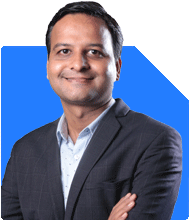Sir, I have income of 70000 per month and I can invest 10000 per month. I have zero knowledge of any investments please guide where and how to invest.
Ans: You have a monthly income of Rs. 70,000 and can invest Rs. 10,000 per month. That's a good start. It's important to focus on building a solid financial foundation before diving into investments. This ensures that your money works best for you.
First, let’s address some essentials.
Building a Strong Foundation
Before starting your investment journey, it's important to have a few basics covered:
Emergency Fund: Save at least three to six months of your monthly expenses. This fund should be in a savings account or a liquid fund. It ensures that you can handle any unforeseen expenses without disrupting your investment plans.
Health and Life Insurance: Ensure you and your family are covered with adequate health and life insurance. Health insurance should cover major medical expenses, while life insurance ensures your family’s financial security in case of unforeseen events. Term insurance is a simple and cost-effective option.
Setting Clear Financial Goals
Next, think about your financial goals. What are you saving for? It could be your child's education, buying a house, or retirement. Knowing your goals helps in choosing the right investments. Different goals will require different investment strategies.
Short-Term Goals: These could be within the next 1-3 years, like saving for a vacation or emergency fund.
Medium-Term Goals: These are typically 3-5 years away, like buying a car or funding a child’s education.
Long-Term Goals: Retirement planning or buying a house falls into this category. These are typically 5 years or more away.
Investment Strategy for Your Monthly Rs. 10,000
Now, let’s look at how you can invest the Rs. 10,000 monthly:
Mutual Funds: Start with mutual funds. They are managed by professionals who make decisions on where to invest your money. You can start with a systematic investment plan (SIP). This allows you to invest a fixed amount every month.
Diversification: Spread your investments across different types of mutual funds. Consider large-cap, mid-cap, and small-cap funds. This diversification reduces risk and balances your portfolio.
Avoid Direct Funds: Although direct mutual funds have lower expense ratios, they might not be suitable if you’re just starting out. They require more active management on your part. Opt for regular funds where a certified financial planner (CFP) can guide you. They ensure your investments align with your goals.
Why Avoid Index Funds
Index funds might seem attractive due to lower costs, but they follow the market. This means in times of market downturns, they may not perform well. Actively managed funds, on the other hand, are managed by experts. They aim to outperform the market, offering better returns, especially in volatile times.
Regular Review of Your Investments
Investments need regular monitoring. The market changes, and so do your financial needs. Set up a quarterly or half-yearly review with your certified financial planner. This ensures your investments stay on track towards your goals.
Tax Efficiency
Investing in tax-saving instruments is important. Under Section 80C of the Income Tax Act, you can invest in Equity Linked Savings Schemes (ELSS). ELSS funds have a lock-in period of three years, and the returns are generally higher compared to other tax-saving options. It also aligns with long-term wealth creation goals.
Education and Awareness
Although you may have zero knowledge of investments now, it’s important to educate yourself. Attend workshops, read books, or follow financial blogs. Understanding basic financial concepts will help you make informed decisions. Even with a certified financial planner guiding you, it's always good to know the basics.
Avoid ULIPs and Investment-Linked Insurance Plans
If you come across Unit Linked Insurance Plans (ULIPs) or investment-linked insurance policies, avoid them. They often come with high fees and low returns. Instead, separate your insurance and investment needs. Invest in mutual funds for wealth creation and opt for a simple term insurance for life coverage.
Final Insights
Investing Rs. 10,000 per month is a great step towards building a secure financial future. With the right foundation, clear goals, and proper guidance, you can achieve your financial aspirations. Start with mutual funds, diversify your portfolio, and regularly review your investments.
Also, continue educating yourself on financial matters. This will give you confidence in your decisions.
Best Regards,
K. Ramalingam, MBA, CFP,
Chief Financial Planner,
www.holisticinvestment.in


























